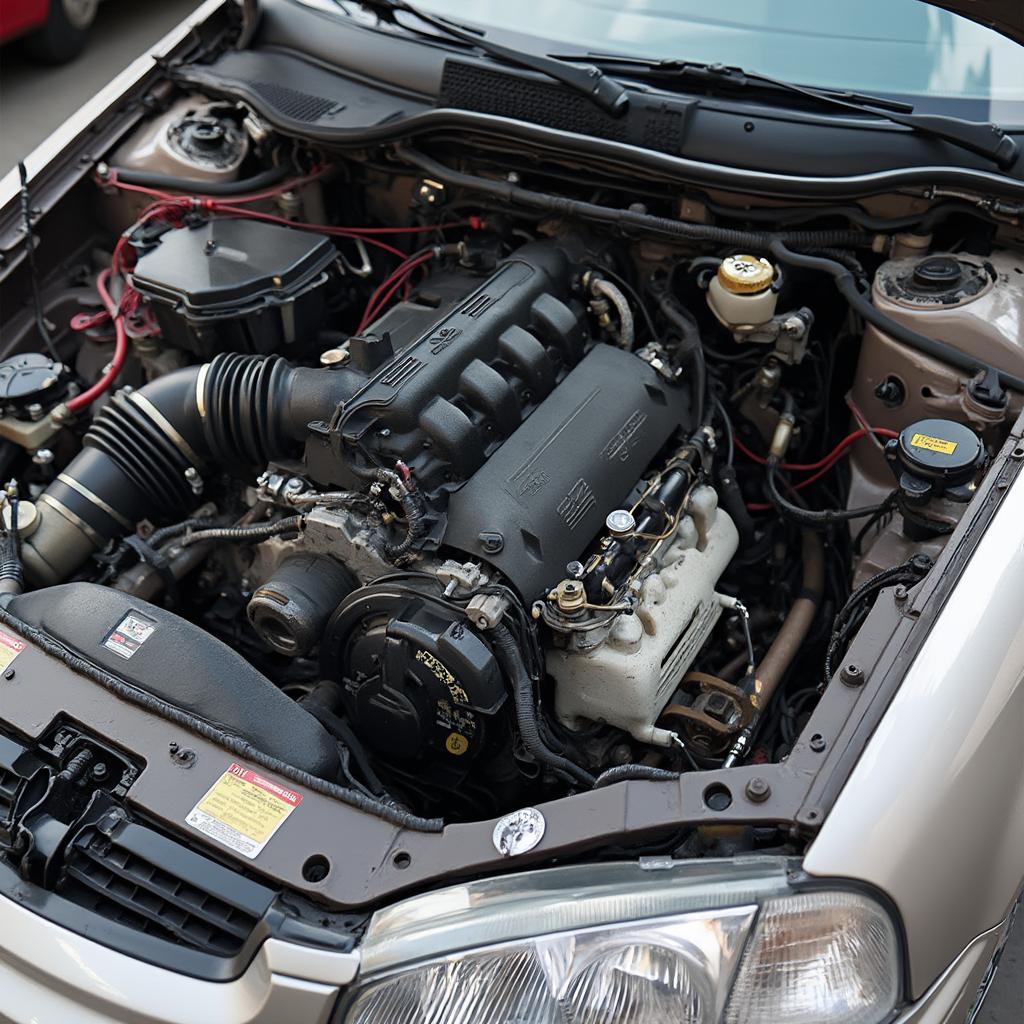Your cart is currently empty!

OBD2 Engine in OBD1 Civic: A Comprehensive Guide
Swapping an OBD2 engine into an OBD1 Honda Civic is a popular modification, often chosen for performance enhancements or replacing a worn-out motor. Understanding the key differences between OBD1 and OBD2 systems is crucial for a successful conversion. This involves addressing wiring, ECU compatibility, and sensor integration to ensure proper functionality and avoid potential issues.
If you’re considering putting an OBD2 engine in an OBD1 Civic, you’re in the right place. This guide will delve into the intricacies of this swap, covering everything from the necessary parts and procedures to potential challenges and solutions. We’ll also explore the advantages and disadvantages of this modification to help you make an informed decision. Learn how an OBD2 to OBD1 converter can simplify the process and make it more efficient. Check out our guide on swapping an OBD2 engine into an OBD1 Civic.
Understanding OBD1 and OBD2 Systems
The On-Board Diagnostics (OBD) system is your car’s internal diagnostic system. OBD1, used in Hondas until 1995, is relatively simple, relying on fewer sensors and a less sophisticated ECU. OBD2, introduced in 1996, is more complex, with more sensors, stricter emission regulations, and a standardized diagnostic connector. This difference in complexity is the primary reason why swapping an OBD2 engine into an OBD1 Civic requires careful planning and execution. Thinking about developing your own diagnostic tools? Our guide on making an OBD2 app could provide valuable insights.
 OBD1 vs OBD2 Connector Comparison
OBD1 vs OBD2 Connector Comparison
Why Swap an OBD2 Engine into an OBD1 Civic?
Often, the motivation behind this swap is access to more powerful and readily available OBD2 engines, like the B16 or B18. These engines offer significant performance gains over older OBD1 counterparts. Additionally, replacing a damaged or high-mileage OBD1 engine with a used OBD2 engine can be a cost-effective solution. You might also consider an OBD2 swap in a CRX.
 OBD2 Engine Installed in an OBD1 Civic Engine Bay
OBD2 Engine Installed in an OBD1 Civic Engine Bay
The Conversion Process: A Step-by-Step Guide
Swapping an OBD2 engine into an OBD1 Civic isn’t a plug-and-play affair. It involves several key steps:
- Gathering necessary parts: This includes the OBD2 engine, wiring harness, ECU, distributor, and any necessary adapters or converters.
- Wiring harness modification or conversion: This is often the most challenging part. You’ll need to merge the OBD2 engine harness with the OBD1 chassis harness.
- ECU installation and programming: Ensuring the OBD2 ECU communicates correctly with the car’s other systems is crucial.
- Sensor integration: All necessary sensors must be correctly installed and connected.
- Exhaust system modifications: Depending on the engine being swapped, exhaust modifications might be necessary.
- Testing and troubleshooting: Thorough testing is essential to identify and address any potential issues.
Challenges and Solutions
Common challenges include wiring complexities, ECU compatibility, and sensor integration. Using an OBD2 to OBD1 converter can simplify the wiring process significantly. This converter adapts the OBD2 engine harness to be compatible with the OBD1 chassis harness, eliminating the need for extensive wiring modifications. Check if your 95 Honda Civic is OBD1 or OBD2.
Expert Insights
John Davis, a renowned automotive engineer, emphasizes the importance of proper planning. “Before starting this swap, create a detailed plan that includes all necessary parts, procedures, and potential challenges. This will save you time and headaches down the road.”
Maria Sanchez, a seasoned mechanic specializing in Honda engine swaps, adds, “Investing in a high-quality OBD2 to OBD1 converter is crucial for a smooth conversion. It simplifies the wiring process and minimizes potential compatibility issues.”
Conclusion
Swapping an OBD2 engine into an OBD1 Civic can be a rewarding project, offering significant performance benefits. However, it’s essential to understand the complexities involved and plan accordingly. By following this guide and addressing potential challenges proactively, you can successfully complete the swap and enjoy the fruits of your labor. Remember, meticulous planning and execution are key to a successful Obd2 Engine In Obd1 Civic swap.
FAQ
- Is it legal to swap an OBD2 engine into an OBD1 car? Legality depends on local emissions regulations. Check with your local authorities before proceeding.
- What’s the cost of this swap? The cost varies depending on the chosen engine, parts, and labor.
- Do I need tuning after the swap? Tuning is often recommended to optimize performance and ensure proper engine operation.
- Can I do this swap myself? If you have mechanical experience, it’s possible. However, professional help is recommended for complex aspects like wiring.
- What are the alternatives to this swap? Rebuilding or replacing the existing OBD1 engine are alternatives.
Common Scenarios
- Engine Replacement: The OBD1 engine is failing, and an OBD2 engine is a cost-effective replacement.
- Performance Upgrade: Seeking a more powerful engine readily available in OBD2 format.
- Project Car: Integrating modern technology into an older vehicle.
Further Exploration
Consider exploring our resources on an OBD2 to OBD1 swap for a Civic. Also, check our article on converting an OBD2 system to OBD1 for more information.
Contact Us
Need help with your OBD2 swap? Contact us via WhatsApp: +1(641)206-8880, Email: [email protected], or visit us at 789 Elm Street, San Francisco, CA 94102, USA. Our 24/7 customer support team is ready to assist you.

Leave a Reply